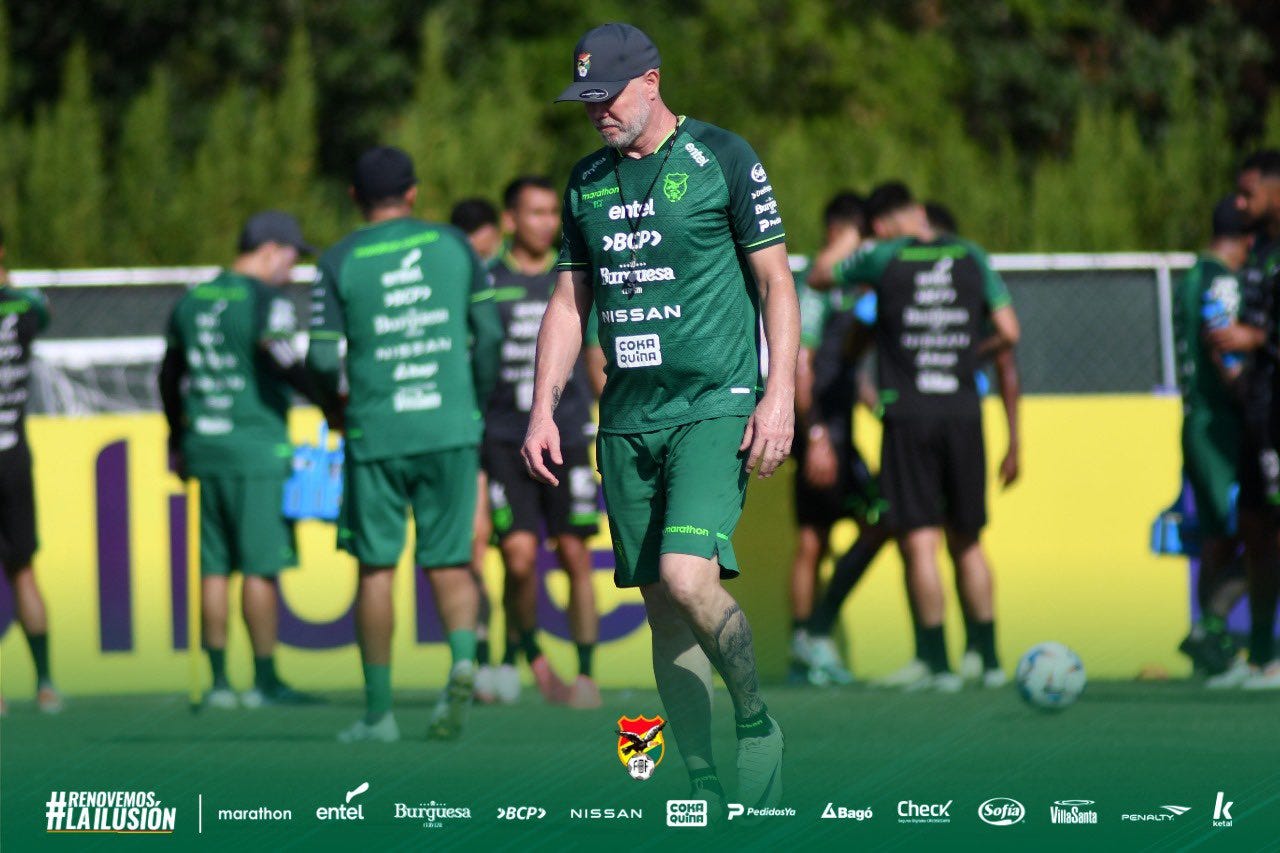🇧🇴 Why hasn't Bolivia been ... better?
Previewing the USMNT's first opponent in the Copa América, South America's cellar dweller
Reporting from Irving, Texas
It’s the type of factoid that must be checked multiple times. Surely that’s not right. Surely you missed something. But, no. That’s correct. The last time Bolivia won an official match outside of Bolivia was at the 2015 Copa América, nearly a full decade ago.
There have been the odd victories in friendlies. They’ve won at home. But outside Bolivia, it’s been a dry stretch.
On Bolivian soil, their advantage is clear. At 12,000 feet, the altitude of La Paz and its Estadio Hernando Siles saps teams of their energy. The world’s best players feel its effects and often struggle for oxygen despite their peak physical condition.
Bolivia can wait teams out, strike when they’re gasping for air and win World Cup qualification matches. Closer to sea level, it’s been less simple.
“It’s tough for us to get victories away from home, but we’ve been working really well and hopefully little by little with hard work the result will come,” Diego Daniel Medina told me this week as Bolivia prepared for its opening match of the Copa América on Sunday against the United States.
The Bolivia national team would truly be a lost cause if that’s not the mentality its players were taking ahead of the Copa América. But few outside the team’s interior think the team has a genuine chance to advance from Group C, especially without Marcelo Martins, Bolivia’s top all-time scorer, leading cap-winner, and emblem of the national team who announced his International retirement las year.
“The Bolivian national team has been getting worse for many years now, and even more so with the retirement of Marcelo Martins - who was the top player for La Verde since he was 18 years old,” Bolivian journalist Victor Quispe told me. “In this Copa América, the hope is younger players who are called on to be the new leaders like Ramiro Vaca or Miguel Terceros take off.”
The numbers and the eye test both show Bolivia has been bad, but why has it been so difficult for the team to break through?
Yes, Bolivia has a small population, but at 12 million it’s much larger than nations like Uruguay, Croatia or Costa Rica that regularly achieve soccer success.
Its economic situation isn’t as strong as some of its rivals, either, but its GDP is comparable with Paraguay, Senegal or Panama.
All those countries can point to much more recent away wins or victories at major tournaments. What gives with Bolivia?
While Mauricio Panozo of Bolivian TV network Red Uno was the only reporter from the country to turn up for the team’s training session Thursday, he insisted La Verde matters to the country. His point was reinforced by a dozen or more Bolivians waiting about a five-minute walk away from the training ground, hoping to get the chance to shake hands and take photos with the team.
Yet when it comes to getting results for those supporters to celebrate, it’s been a tall task. Panozo says the motivation to develop young players simply isn’t strong enough - for clubs or the federation.
“I believe the youth teams don’t really matter to the professional clubs. They just have the lower levels because it’s a rule. They don’t invest in it.” he said. “I don’t think the first division is competitive. It’s slow and not really tactical. It’s more (route one), fight for it.”
At times, those techniques can work, especially with the great equalizer of altitude. Bolivar won a Copa Libertadores group that included Brazilian giant Flamengo and now goes into a Round of 16 game against that same Flamengo club.
While Austin Miller, an American based in Buenos Aires who is an expert in South American soccer, can recall several examples of club success, he agrees that the league and its clubs are at the root of Bolivia’s issues at the international level. He sees parallels with Mexico in that the country’s top clubs are content to settle with their current realities, which may work for them but can hinder the national team.
“My theory on Bolivia is Bolivar and The Strongest have been successful enough on the continental level lately that there’s no reason for them to try and play a different style because the ingrained style of, ‘Use the altitude to our advantage and figure out what to do away from it’ has worked, right?” Miller said. “There’s 13 players in the national team from Bolivar and The Strongest. That’s where these players are coming from.
“But bunker and hope for the best is not a very conducive style to Bolivia being successful, and I think that’s why you see so many struggles for Bolivia internationally.”
Zago, Bolivia’s Brazilian manager, is hoping to put a long-term plan in place that will see a younger generation take hold and push the national team to new heights figuratively even when they’re not at the literal height of La Paz. Even he has said, though, this summer may be too soon to snap the streak.
United States players said Friday that they’re not underestimating what Bolivia can do on the field Sunday, especially after the 5-1 friendly loss the U.S. suffered which many put down to a lack of concentration.
The expectation, though, is for the Stars and Stripes to get all three points - and the opposite is true in Bolivia.
“Very little is expected against the United States,” Quispe said. “Before, Bolivia was the favorite in matches against the Americans, but now the balance has tilted in favor of the Copa América hosts because they invested in player development - something Bolivia hasn’t done since it qualified for the World Cup in 1994.”
It is a reminder that nothing is permanent in soccer, neither success nor winless streaks so long they require a second fact-check.







